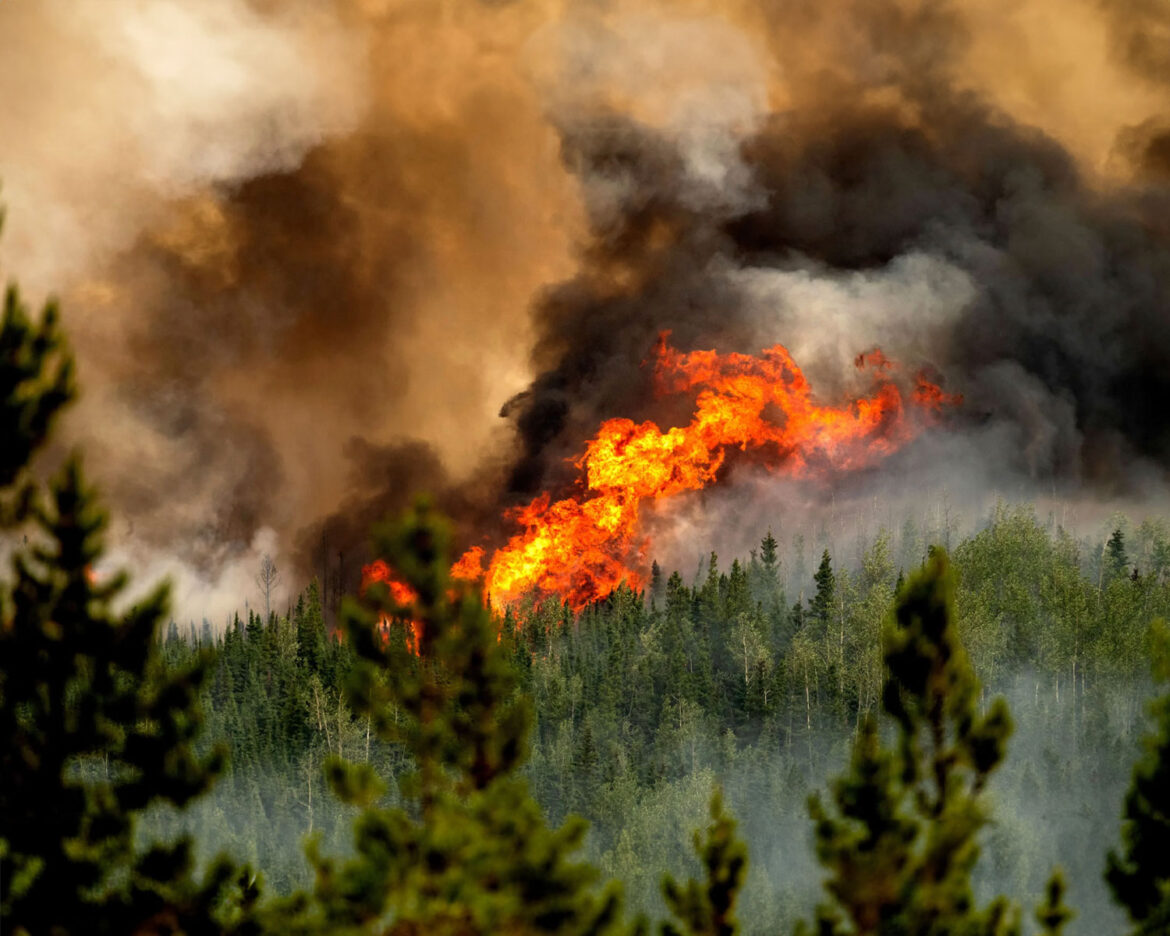In an alarming revelation, wildfires that ravaged Canada’s forests last year emitted more greenhouse gases than some of the world’s largest polluting countries, according to a study published on Wednesday. The study, featured in the journal Nature, highlights the unprecedented scale of these emissions, which reached 647 megatonnes of carbon, surpassing the annual emissions of seven of the top ten global emitters in 2022, including Germany, Japan, and Russia.
Only China, India, and the United States emitted more carbon during that period, making Canada’s wildfires the fourth-largest emitter globally if ranked alongside nations. Typically, emissions from Canadian forest fires have varied between 29 to 121 megatonnes over the last decade. However, the intensifying effects of climate change, driven by the combustion of fossil fuels, have created drier and hotter conditions, leading to more extreme wildfires.
In 2023 alone, these fires devastated approximately 15 million hectares (37 million acres) across Canada, accounting for about 4% of the country’s forests. This alarming trend raises concerns about the global reliance on forests as long-term carbon sinks. As these carbon stores increasingly become sources of emissions due to fires, the accuracy of global carbon budget calculations, which aim to limit warming to 1.5 degrees Celsius above preindustrial levels, is called into question.
Brendan Byrne, an atmospheric scientist at NASA’s Jet Propulsion Laboratory and the study’s lead author, stressed the need for a reassessment of global emissions strategies. “If our goal is really to limit the amount of carbon dioxide in the atmosphere, we need to make adaptations into how much carbon we are allowed to emit through our economy, corresponding to how much carbon is being absorbed or not absorbed by forests,” Byrne stated.
The study also warned that the abnormally high temperatures experienced in Canada in 2023 could become the norm by the 2050s, potentially leading to even more severe wildfires across the 347 million hectares (857 million acres) of woodlands that Canada relies on for carbon storage.
Adding to the concern, the carbon released by these worsening wildfires is not accounted for in Canada’s annual greenhouse gas emissions inventory. Under the country’s 2021 Nationally Determined Contribution Strategy, carbon emissions are counted when released from human activities, such as industrial processes, but not from natural disturbances like wildfires or insect outbreaks. Byrne pointed out, “The atmosphere sees this carbon increasing, no matter how we set up our accounting system.”
This study underscores the urgent need to reconsider how we manage and protect the world’s forests in the face of escalating climate change.



